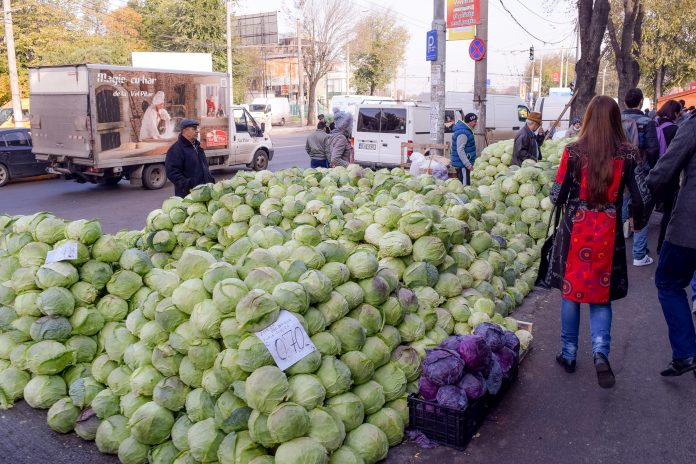Pickled, boiled, raw or rolled into the national dish sarmale, cabbage is a staple in the Romanian kitchen, the medicine cabinet and farmyard.
It’s been consumed and used for centuries partly thanks to Romania’s favorable soil and climatic conditions. Romania is the third biggest cabbage producer in the European Union after Germany and Poland.
Sturdiest variety
Licurisca autumn cabbage was one of the tastiest and sturdiest varieties in Romania, but it gradually died out last century after being cross-fertilized with other varieties and imported cabbage strains took over.
Now, a group of researchers have managed to revive the indigenous cabbage, winning a gold medal for their efforts.
Researchers Costel Vînătoru, Bianca Muşat, Camelia Bratu, Geanina Negoşanu, Matilda Popescu, Dorel Hoza – from the Bank for Plant Genetic Resources (BRGV) Buzau were awarded gold medals at the UGAL INVENT 2023 Innovation and Research Salon, specifically for ‘reviving’ Licurişca”.
Imported cabbage
” We presented a paper that dealt with the restoration of the cabbage variety ‘Licurişca‘, a work of genetic archaeology, because this variety is considered one of the oldest varieties of cabbage cultivated in Romania, a variety that has disappeared from the crop, unfortunately replaced by imported ones.”
„We tried to bring it back to life. We debuted this program at the World Congress of Horticulturists in Angers last year., where we presented our work… which was accepted to be published in the most prestigious horticultural journal of the world, BRGV director, Costel Vînătoru told Agerpres.
The cabbage is ubiquitous in Romania__ even in the days of rationing of the late 1980s and the shortages of the early 90s__ they were aplenty.
Wild cabbage
The traditional cabbage that is grown in Romania is cultivated white cabbage with tightly packed light green leaves that originates from wild cabbage found along the coastal regions of the Mediterranean Sea.
It’s mentioned by Syrian traveler Paul of Aleppo in his diary, who visited the Romanian provinces of Wallachia and Moldova in the mid 17th century.
In Dictionarul sănătății published in 1910, authors Vasile Bian and Ioan Glavan say cabbage is one of the most important vegetables for the Romanian people and also appreciated for treating certain diseases, such as bruises and sore joints.
Seed catalogue
In 1958, the first modern seed catalog of cultivated vegetable plants authorized to be marketed in Romania appeared, which includes the Licurisca cabbage variety.
At the time, the cabbage flourished everywhere, but seed companies and genetic erosion caused by crossing the variety with other genotypes meant it died out and was replaced by foreign varieties.
Medicinally, cabbage leaves are used for bruises and joint pain. It also is used to treat digestive disorders such as gastritis, and peptic ulcers. Eating raw cabbage can help acid reflux, constipation and help the liver, gallbladder and kidneys.
Vitamins
It contains vitamins A, C and K and is one of the cheapest vegetables at the market, retailing for much less than one euro for a kilogram.
With Christmas around the corner, when Romanians feast on sarmale, meat and rice-stuffed cabbage rolls, Licurisca may not be back on the menu yet, but next year I wager many Romanians will tuck into the national dish with the newly revived national cabbage.
More than a simple sausage. Romania’s most famous salami gets its own book

















